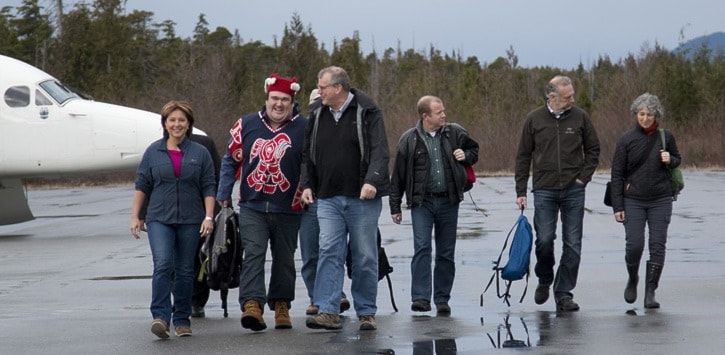The B.C. government is preparing legislation to formalize its 10-year project to protect and share logging management on a vast area of the B.C. coast with forest companies and 26 coastal First Nations.
The agreement puts 85 per cent of the world's largest intact temperate rainforest off limits to logging, and also makes permanent a ban on commercial grizzly bear hunting that was announced for much of the central and north coast region in 2009.
Including Haida Gwaii, the Great Bear Rainforest agreement covers 6.4 million hectares on B.C.'s central and north coast, an area about twice the size of Vancouver Island.
The final version of the long-sought agreement increases the amount of protected old-growth forest from 50 to 70 per cent, in addition to large areas of second growth. It adds eight new special forest management areas covering 295,000 hectares where logging is not permitted.
"Ecosystem-based management is the modern term to describe what we have always done," said Chief Marilyn Slett, president of the Coastal First Nations, which includes the Haida Nation, Gitga'at, Metlakatla, Heiltsuk and other communities on the north coast.
Dallas Smith, president of the Nanwakolas Tribal Council representing central coast communities, praised the co-operation of industry and government for the forest land use and a companion marine protection agreement that still requires federal approval.
"I stand here today proud, happy, but still a little bit upset that it's taken this long," Smith said.
Rick Jeffery, representing the industry group of Interfor, Catalyst, Western Forest Products and the provincial agency B.C. Timber Sales, said the agreement means an end to conflict and protest, with stable access to 550,000 hectares of forest harvest land.
"We know now where we can operate and what the running rules are," Jeffrey said.
Forests Minister Steve Thomson said the B.C. government will provide $15 million over five years to help aboriginal communities start their own forest companies. The deal also turns over forest carbon credit rights to First Nations, which could be sold as offsets for natural gas development.
Richard Brooks of Greenpeace Canada said when environmentalists began to push for preservation of the region, 95 per cent of the forest was available for logging, and now 85 per cent is protected.
The agreement formally began in 2006 when a land use plan covering about a third of the region was adopted, and work started on a compromise between industry, First Nations and environmental groups that had been organizing boycotts of B.C. forest products.
The B.C. and federal governments put up $30 million each to create a larger plan using "ecosystem-based management" and aboriginal rights.
The U.S. Nature Conservancy put up a matching $60 million, raised mainly from U.S. private foundations, the William and Flora Hewlett Foundation, the David and Lucille Packard Foundation, the Wilberforce Foundation, the Rockefeller Brothers Fund and the Gordon and Betty Moore Foundation.
Environmental groups Greenpeace, Sierra Club and ForestEthics represented the foundations, and have since argued that too much old-growth forest would continue to be logged under the plan.
